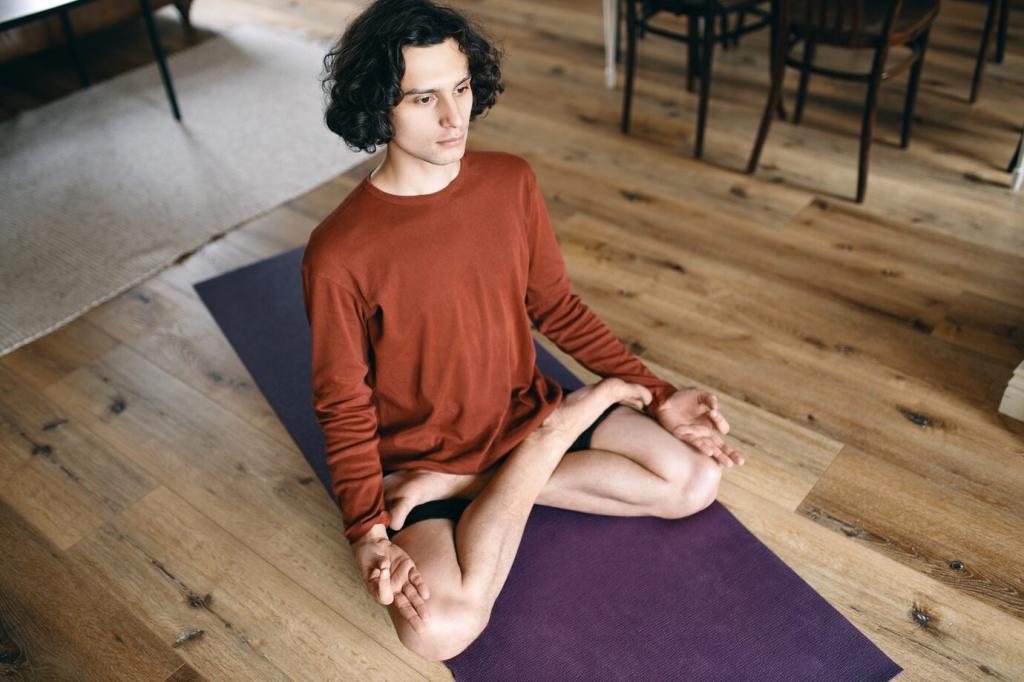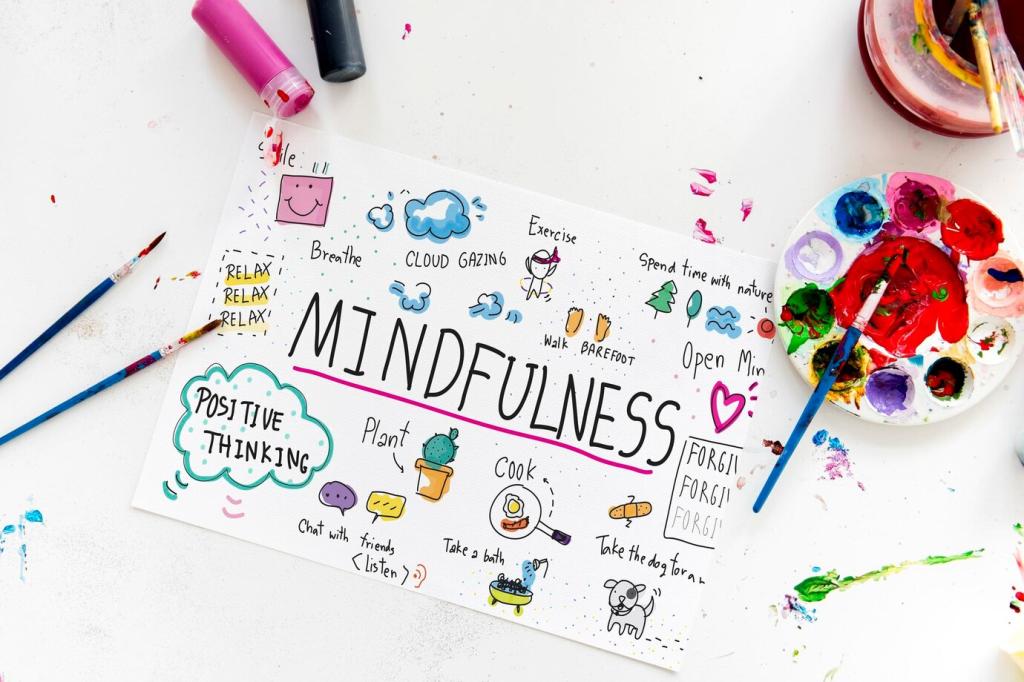Daily Meditation Routine Tips: Gentle Structure, Lasting Calm
Selected theme: Daily Meditation Routine Tips. Begin each day with clarity, ease, and a routine that actually fits your life. These practical, human-tested ideas nurture consistency without pressure. Share your own morning ritual below and subscribe for fresh, supportive prompts.

Design Your Morning Anchor
Pick a cue that already happens each morning—after brushing teeth, before coffee, or right when the kettle boils. Consistency thrives when your meditation follows a predictable event, minimizing decision fatigue and eliminating the slippery slope of “later.”

Design Your Morning Anchor
Place a cushion, gentle light, and perhaps a plant where you can sit undisturbed. When your space looks ready, your mind meets less resistance. Keep it uncluttered so your first breaths feel like stepping into calm, not chores.
Habit Stacking for Real-Life Consistency

Use the Two-Minute Rule
Commit to just two minutes. If you continue, excellent; if not, you still honored your routine. Psychologically, the start is the hardest part, and short commitments train identity before chasing heroic durations.

Stack Meditation After a Micro-Win
Follow a little victory—making the bed, hydrating, or opening curtains—with your sit. Small wins prime confidence and reduce friction. Over time, your brain pairs that satisfying click of completion with settling into mindful presence.

Track Streaks With Self-Kindness
A simple calendar or app checkmark builds momentum. When a streak breaks, celebrate the next start instead of mourning a number. The practice is not the chain; the practice is returning, gently and repeatedly.
Techniques for Busy or Restless Days
Try 60 seconds of box breathing—inhale four, hold four, exhale four, hold four. Repeat three times between tasks. Small resets throughout the day maintain steadiness and make your longer practice feel inviting, not obligatory.


Techniques for Busy or Restless Days
Use doorways, elevator rides, and calendar reminders as transition bells. Pause, feel your feet, soften your jaw, and choose the next action deliberately. Transitions stitched with attention become a daylong thread of calm.
Overcoming Common Obstacles
Sleepiness and the Heavy Head
Open a window, sit upright without leaning, or practice with eyes slightly open. Morning hydration matters more than we admit. If drowsiness persists, shorten sits and add a brisk one-minute standing pause mid-session.
Restlessness and the Urge to Flee
Name the sensation—“buzzing legs,” “tight chest”—and breathe into where it lives. Labeling gently reduces over-identification. Promise yourself you can stop after three more breaths; often, the storm passes when granted compassionate boundaries.
The Wandering, Story-Spinning Mind
Notice the narrative, thank the mind for its creativity, and return to breath or body. Each return is a rep, strengthening attention like a muscle. Progress looks like remembering to return, not never drifting.

Gradually Extend Your Sit
Add one minute each week until you meet a sustainable edge. Curiosity beats ambition. Many discover that comfortable ten-minute sessions deliver transformative calm when repeated consistently across ordinary days.

Journal Tiny Noticings
After practice, jot one sentence: a sensation, a thought pattern, a moment you softened. Over time, these notes reveal trends and triggers, turning private whispers into guidance that refines your routine.

Alternate Focus to Stay Fresh
Rotate breath awareness, body scan, and loving-kindness across the week. Gentle variety prevents autopilot while honoring your core routine. On heavy days, choose compassion practices; on foggy days, choose crisp breath counting.
Science, Stories, and Gentle Motivation
Studies of regular mindfulness practice report improvements in stress reactivity, attention, and emotional regulation within weeks. The key ingredient is consistency, not marathon sessions. Short, daily sits grow measurable benefits over time.
Science, Stories, and Gentle Motivation
Maya felt mornings were chaos until she tied meditation to warming her mug. Three slow breaths, then five minutes. After two weeks, she noticed fewer midday spirals and began responding, not reacting, to emails.


Community, Challenges, and Ongoing Support
Tell us your anchor—kettle whistle, sunrise stretch, or post-shower pause. Readers borrow great ideas from each other, and your detail could be the missing puzzle piece for someone’s sustainable routine.
Community, Challenges, and Ongoing Support
Commit to two minutes a day for thirty days. Post weekly check-ins, wins, and wobblies. We will share prompts, mini-audios, and compassionate nudges that keep the focus on consistency, not perfection.


